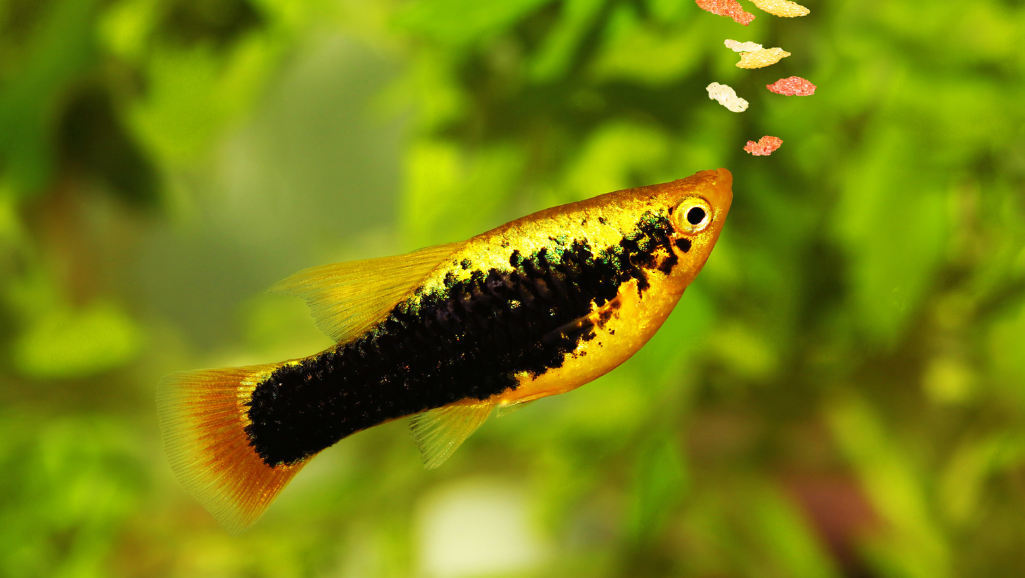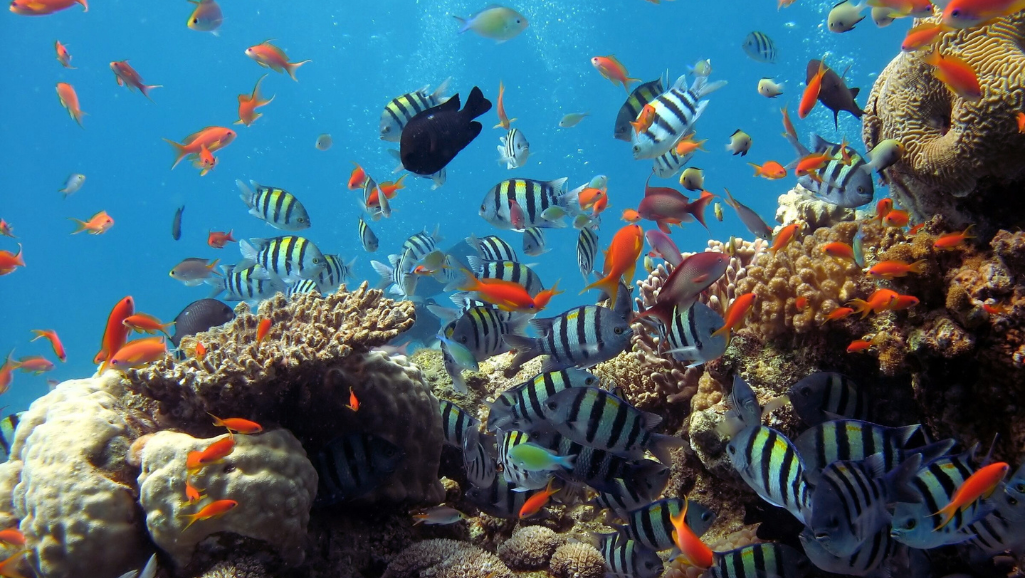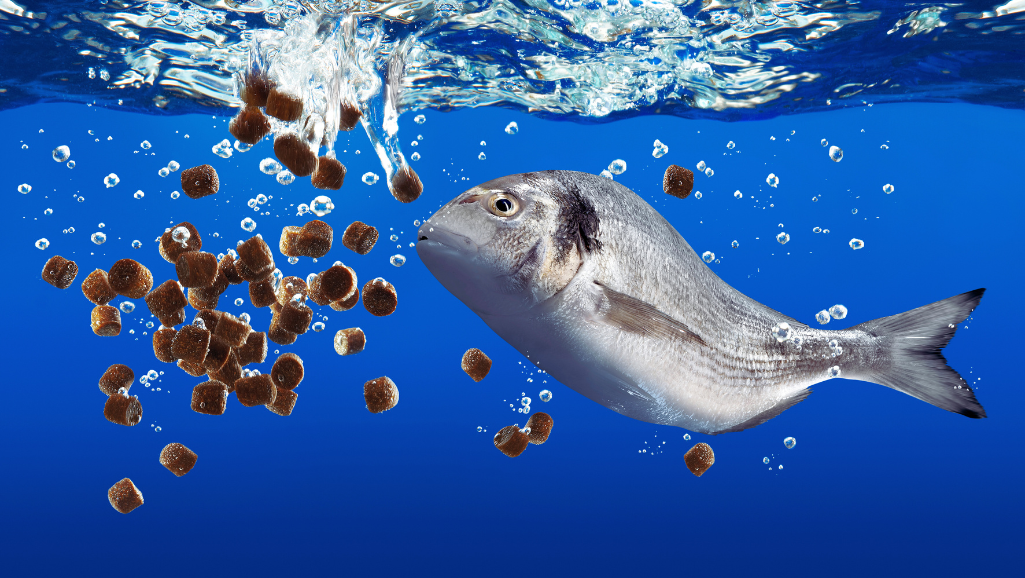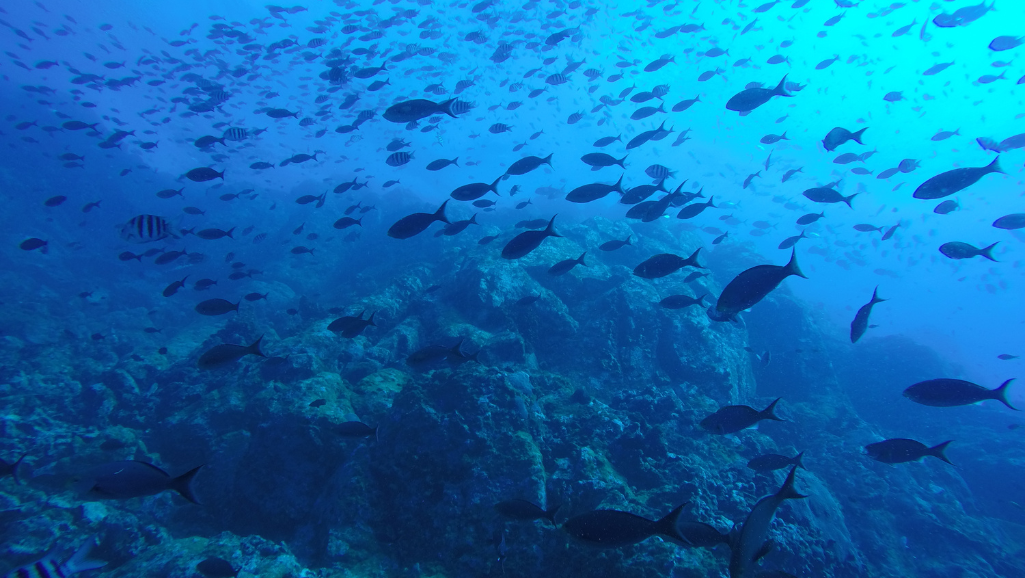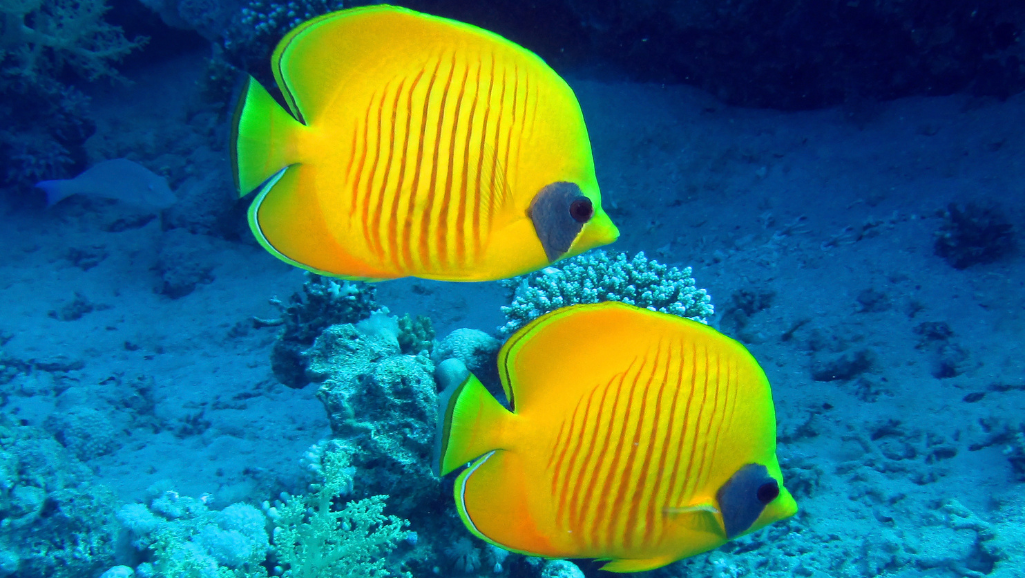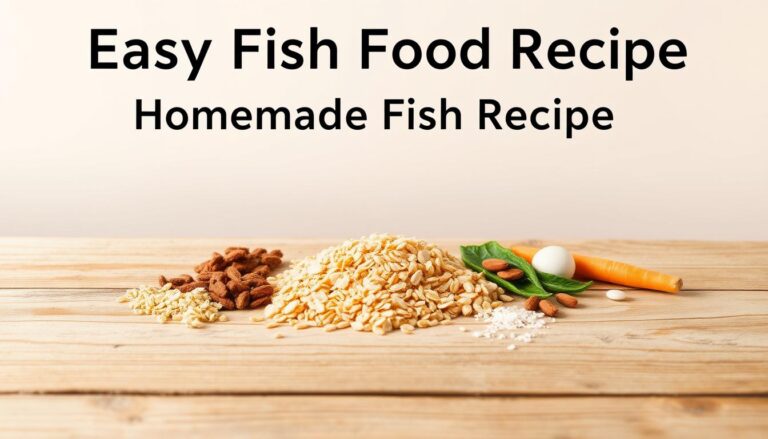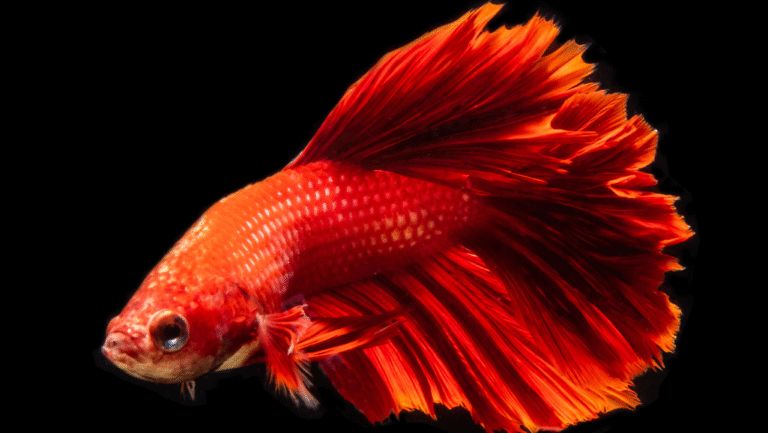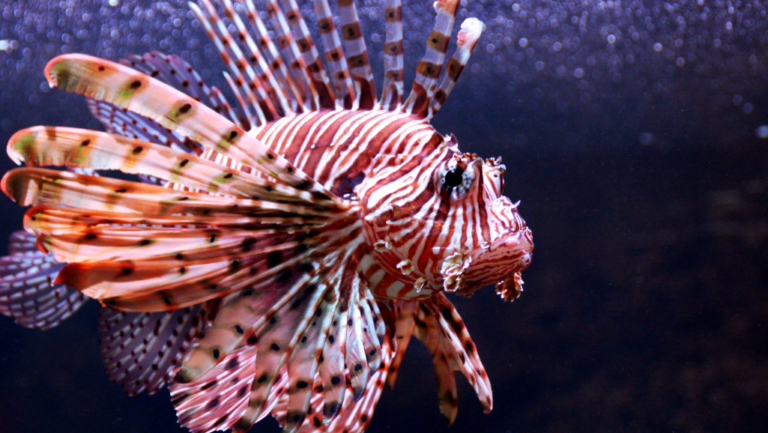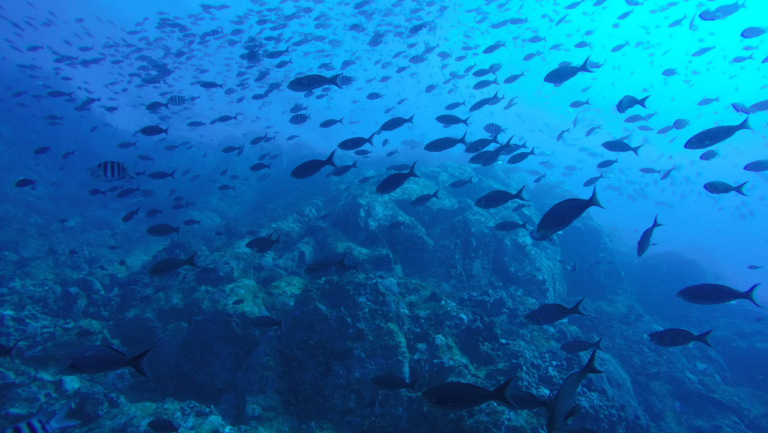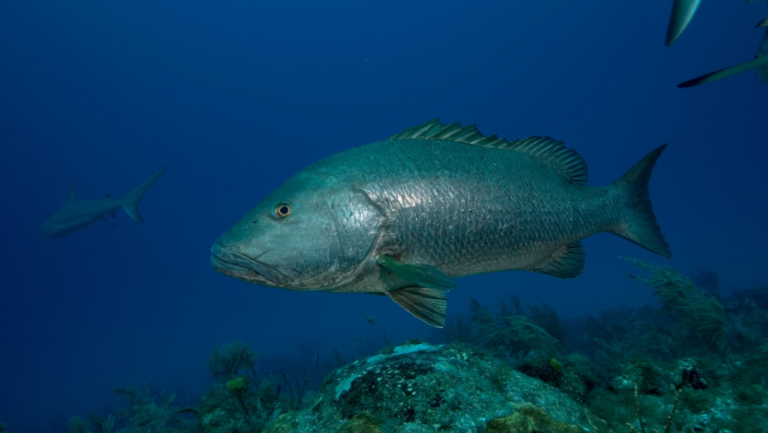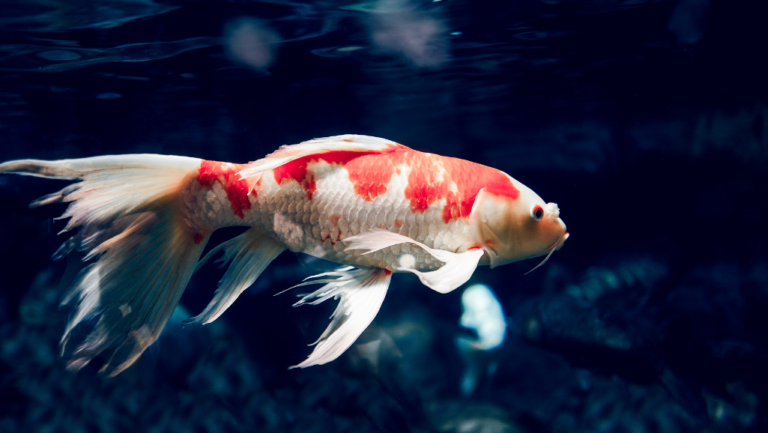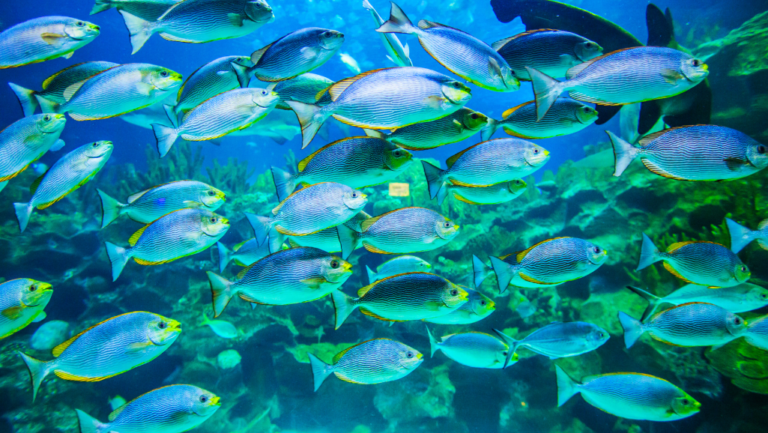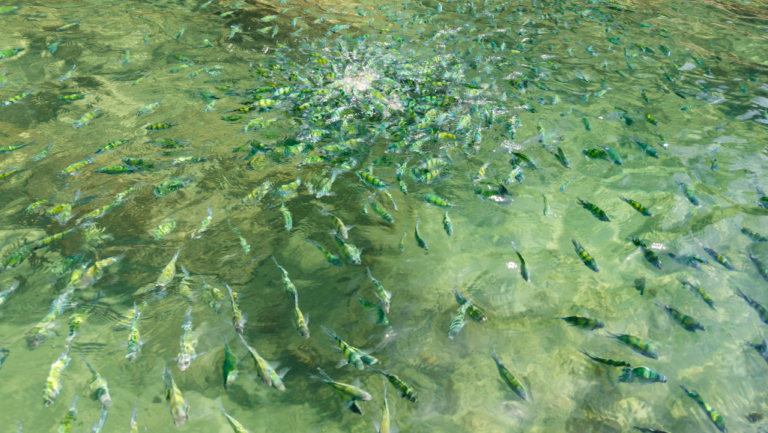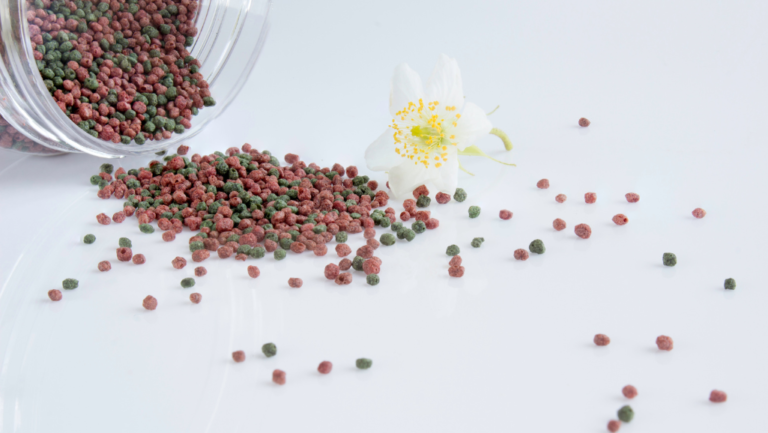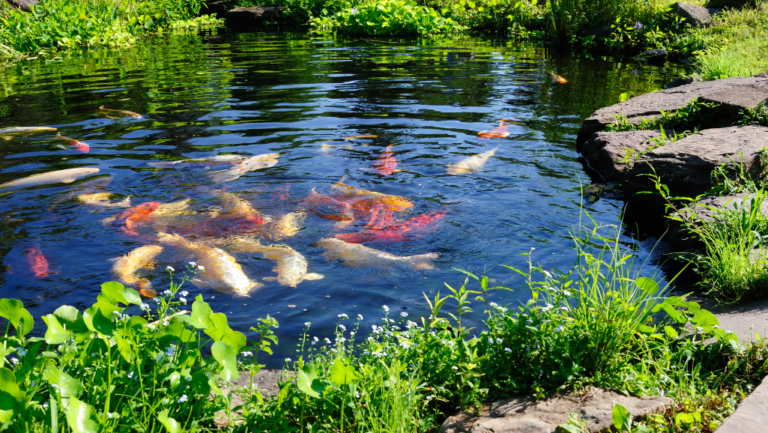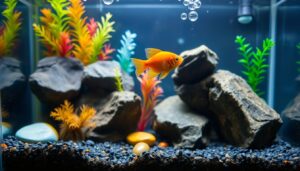It’s key to give your aquarium fish the right food for their health. But, with so many fish types and their unique needs, picking the right food can be tough. This guide will cover what different fish need to eat, the types of food out there, and how to feed them well.
Knowing how fish eat in the wild helps us feed them right in tanks. Many popular fish, like guppies and angelfish, eat a mix of foods. But, some fish, like surgeonfish, mostly eat plants. Others, like bettas, mainly eat meat.
There are many fish foods available, like flakes, pellets, and live foods. Each type is made for different fish needs. For example, plant-eating fish do well with algae wafers and veggies. Meat-eaters, like bettas, prefer foods like worms and shrimp.
Key Takeaways
- What Food Can Fish Eat?
- Provide a balanced diet based on your fish species’ specific nutritional needs
- Offer a variety of food types, including flakes, pellets, live, and frozen foods
- Feed fish as much as they can consume within 2-5 minutes, removing excess food
- Avoid overfeeding, as it can lead to poor water quality and health issues
- Adjust feeding strategies based on fish size, shape, and aquarium environment
Understanding the Dietary Needs of Different Fish Species
Keeping your aquarium fish healthy means knowing their diet needs. With over 60 million hobbyists worldwide, it’s key to know that each fish type needs different food. Whether it’s herbivorous, carnivorous, or omnivorous fish, the right food is crucial.
Recent studies have helped us better care for fish in tanks. In 2002, a study in Singapore showed the importance of good nutrition for fish health. It was done by accredited vets on thirty-three top fish food brands.
Herbivorous Fish
Herbivorous fish, like plecos, need lots of plant matter. They have big guts for eating small amounts of veggies. Less than 5% of their diet should be protein. For a herbivorous fish diet, offer a variety of plants to meet their nutritional needs.
Carnivorous Fish
Carnivorous fish, with their short digestive tracts, need lots of protein. They can eat big foods like whole fish. Choose foods that mimic their natural prey, like fish, insects, and crustaceans.
“Protein in commercial fish feeds typically ranges from 18-50 percent, with varying percentages for different fish species such as shrimp (30-35 percent), catfish (28-32 percent), tilapia (35-40 percent), striped bass (38-42 percent), and trout (40-45 percent).”
Omnivorous Fish
Omnivorous fish, the most common in aquariums, need a mix of plant and animal foods. They can eat a variety of foods but need a balanced diet. Research the specific needs of your omnivorous fish to ensure they get all the nutrients.
Knowing what your fish need helps them grow and stay healthy. Always research their specific needs and choose high-quality, balanced fish food. This will keep your fish thriving.
Types of Fish Food Available
There are many options for feeding your aquarium fish. You can choose from flakes, pellets, freeze-dried, live, and frozen fish food. Each type has its own benefits and is best for different fish species.
Flakes, Pellets, and Wafers
Flakes fish food is very common and works for many fish. It’s made for marine, tropical, goldfish, and cichlids. Pellets are for bigger fish and come in floating and sinking types. They’re good for fish that live on the surface or bottom.
Wafers slowly sink and are great for fish that eat at night. They’re best for plecos and other bottom feeders. Give them just enough for the fish to eat in two hours.
Freeze-Dried Foods
Freeze-dried fish food is a good choice because it’s like live food but easier to store. Feed it sparingly, so the fish can eat it in two minutes, once a day. Dried seaweed and spirulina are also great for herbivorous fish. They’re full of minerals and vitamins.
Live and Frozen Foods
Live and frozen foods are very nutritious for fish. Baby brine shrimp hatch in 18-36 hours in warm salt water. They’re perfect for feeding small fry. Daphnia are small and breed fast, needing stable water.
Blackworms need to be conditioned in cool water and should be rinsed daily. Frozen foods like beefheart or squid are good for carnivorous fish. Fresh veggies like romaine lettuce or cucumber are great for herbivorous fish like plecos and goldfish.
Tailoring your fish’s diet to their needs is key for their health. Offering a mix of high-quality foods ensures your fish stay happy and healthy.
How Much and How Often to Feed Your Fish
Feeding your fish the right amount at the right time is key to their health. Overfeeding can harm your fish and mess up your tank. We’ll look at how to figure out the best fish feeding amount and fish feeding frequency for your fish.
Determining the Right Amount of Food
The right food amount depends on your fish’s species, size, and age. It also depends on the type of food you give them. Feed them just enough so they eat it all in five to ten minutes. Remove any leftover food to keep the water clean and prevent toxins.
Here are some tips for finding the right fish feeding amount:
- Feed until they look a bit round, but this can be hard to see in round fish like goldfish.
- Avoid overfeeding to prevent health issues like fatty liver disease and infections.
- Choose the right food for your fish’s needs.
- Keep fish food in a cool place to keep it nutritious.
Feeding Frequency
The best feeding schedule for your fish depends on their species, age, and how fast they digest food. Most fish do well with one or two meals a day. But, some need to eat more or less often.
In the wild, fish eat when they can, even if they just ate.
Here are some guidelines for fish feeding frequency:
- Adult fish usually do well with one or two meals a day.
- Herbivores like silver dollars need to eat often because they graze all day.
- Newly hatched fry and young fish need to eat three to four times a day to grow fast.
- Predatory fish may only need to eat a few times a week. Nano fish and baby fry need to eat more often.
- Nocturnal fish should be fed after the lights go off.
By feeding your fish the right amount at the right time, you help them stay healthy. This also keeps your tank in good shape.
Tips for Avoiding Overfeeding
Overfeeding is a common mistake that can harm your fish and water quality. To keep your fish healthy, it’s key to know how to feed them right. Learn proper fish feeding tips and avoid overfeeding.
Remember, your fish should eat all food in 4-5 minutes. Smaller, more frequent meals are better than one big meal. This way, you mimic their natural eating habits and prevent overeating. Feeding twice a day is usually enough, but check what your fish species needs.
Offering Appropriately Sized Foods
It’s important to choose the right food size for your fish. Use foods that fit your fish’s mouth well. This helps them eat better and prevents food from sinking and causing water quality issues.
Monitoring Feeding Times and Amounts
Watch both feeding times and food amounts closely. See if your fish eat eagerly and adjust food amounts as needed. It’s safer to underfeed than overfeed, as overfeeding can cause obesity, digestion problems, and algae growth.
Overfeeding is the major cause of fish loss.
Removing Uneaten Food
Always remove uneaten food after feeding. Leftover food can break down and harm your fish. Use scavenger fish or good filtration to clean up. If you think you’ve overfed, change 25% of the water to reduce waste.
By following these fish feeding tips and avoiding overfeeding, you can keep your fish healthy. This will also help your aquarium stay balanced and thriving.
What Food Can Fish Eat: Exploring Dietary Options
Commercial fish foods are convenient and balanced for your pets. But, there are other options beyond flakes and pellets. These alternatives can add essential nutrients and improve your fish’s health.
Fresh vegetables are great for your fish’s diet. Try blanching zucchini, cucumber, romaine lettuce, spinach, and sweet potato. Herbivorous fish need only plants, like algae, for food.
For carnivorous fish, a diet rich in protein is key. Live, frozen, or freeze-dried foods like worms and shrimp are good. A homemade recipe might include white fish and shrimp.
Omnivorous fish need a mix of plants and animals. A recipe might include garlic and seafood. High-protein foods can use salmon and shrimp.
“Feeding fish a varied diet that includes both commercial and homemade options can provide them with a wide range of essential nutrients and keep them healthy and thriving.”
Remember, human foods should not be more than 10% of a fish’s diet. Avoid sharp or large food pieces to prevent harm. Treats should not replace regular pellets.
Always research the specific dietary requirements of the fish species you keep to ensure they receive proper nutrition. Start with regular food and then introduce homemade options. Changing recipes every few months keeps the diet interesting.
Conclusion
Feeding your aquarium fish the right food is key to their health. Knowing what each fish needs and choosing the right food is important. This fish feeding guide has covered all you need to know about fish nutrition.
It’s important to give your fish a variety of food. This includes flakes, pellets, frozen foods, and live foods like daphnia and bloodworms. Brands like New Life Spectrum, Repashy, and Saki Hikari are known for their quality.
Remember, the age and size of your fish affect how much they eat. Younger fish need more food, while older fish eat less. Always watch how much your fish eat and clean up any leftover food to keep the water clean.
By following these tips, you can make sure your fish are happy and healthy. This guide has given you the knowledge to care for your fish well.
